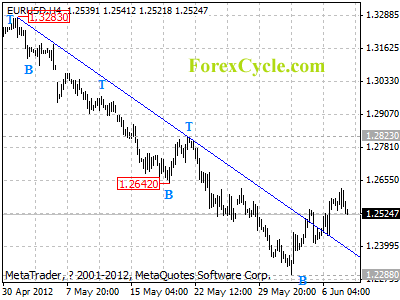Words, indeed, are powerful things. As an Englishman in America, my personal favorite is freedom.
It’s embodied by those words penned so long ago by a young Thomas Jefferson…
It’s the idea that “We hold these truths to be self-evident, that all men are created equal, that they are endowed by their Creator with certain unalienable Rights, that among these are Life, Liberty and the pursuit of Happiness.”
That’s not only the foundation for what I believe, but it’s also the basis for how I invest.
It’s a technique I call “Liberty Investing.”
As such I like to invest in countries and companies whose operations are compatible with freedom, as defined by the Founding Fathers and the best U.S. political and economic traditions.
To me, this is ultimately the right way to run both societies and companies. And when we follow them, our returns will be consistently superior over the long term.
I often look for a number of characteristics in the countries where I invest.
For instance, market signals should be paramount and government participation in the markets should be relatively low. The Heritage Foundation Index of Economic Freedom is a good measure of this.
Each country should also have a high level of integrity-meaning they follow the rule of law. A good score on Transparency International’s Corruption Perceptions Index is a good measure of this.
They should also be generally free and democratic, and should have a fairly small government and moderate taxation. Interest rates also should be above the level of inflation, so they don’t deprive their economies of domestic savings.
Finally the local bureaucracy should be reasonable to deal with. The World Bank has an Ease of Doing Business Survey that tells you this.
You see how this freedom-based investing technique works?
They’re also fairly unlikely to expropriate your investments, and will maintain your right to property.
That’s why I’m suddenly more interested in investing in Latin America. To tell you the truth, you should be too.
Here’s why.
Liberty Investing in Latin America
Latin America as a whole has averaged 4% real growth in the last decade, far more than you would have gotten in Europe, North America or even much of Asia outside of China and India.
That gives us the kind of growth we need to watch our investments grow.
Yet the region remains a minefield for investors.
Certain populist governments have been expropriating companies, making property rights extremely vulnerable.
However there are a few bright spots. Namely they are countries where things are improving -albeit gradually.
Given these trends, the region is too good to pass up – even though it does still carry risks.
A Liberty Investor’s Tour of Latin America
Bearing those in mind, here’s a Liberty Investor’s tour of Latin America as I see it.
Investing in Argentina and Venezuela: Other than both countries being democracies, they obey none of the Liberty Investing criteria. Foreign investments are not safe from expropriation while both countries score low on integrity and have governments that dominate every sector of their economies.
Interest rates in both countries are below the level of inflation, and the local bureaucracies are arbitrary and chauvinistic. Finally, the government overrules the free market in both countries at every opportunity.
Mark this Pair: “Not a Chance”
Investing in Brazil: This darling of the international investment community is also not suited for a Liberty Investor. Until recently interest rates were well above inflation, but the government has lowered them several times and plans to lower them further.
Government in Brazil is too large, and meddles in many sectors of the economy, seeking to build Brazilian champions in such areas as shipbuilding.
Until 2009, the resource sector was fairly safe from government meddling, but that is no longer the case. Finally the World Bank ranks Brazil an appalling 126th on its Ease of Doing Business survey, below Russia.
Mark this one: “I Don’t Think So”
Investing in Mexico: Ranks 54th on the Heritage Foundation’s Index of Economic Freedom, which is not too bad. Mexico is also above Brazil on the corruption index and a respectable 53rd on the Ease of Doing Business Index.
On the other hand, in sectors such as energy, the government is completely dominant, more so than in Brazil. Mexico has an election in July, which could go either way.
Mark this one: “Avoid for Now”
Investing in Peru: This one ranks a high 42nd on the Index of Economic Freedom and 41st on the World Bank Ease of Doing Business Index. Its government is relatively small, and the market sector dominant, although current policy is to increase government participation.
On the other hand, interest rates are below the inflation rate and the current president Ollanta Humala is left-of-center. Overall, Peru is acceptable, but no more than that at this stage.
Mark this one: “A Maybe Later”
Investing in Colombia: This one is similar to Peru, but better. It has rankings of 45th on the Index of Economic Freedom and 42nd on the Ease of Doing Business. Like Peru, it has a relatively small government, but unlike Peru the government is strongly pro-market.
Add to this the fact that it has recently signed a free trade agreement with the United States, and is enjoying an oil and infrastructure boom, and you can see the investment opportunities in Colombia are very interesting indeed.
Mark this one: “A Buy”
Investing in Chile: Finally, there’s Chile. It has a stellar ranking of 7th on the Heritage Foundation index – three places above the United States.
It also ranks above the U.S. on the Corruption Perceptions Index, but is only 39th on the Ease of Doing Business index, with construction permits being a particular problem area. Its government is small by global standards and its taxation moderate, with a privatized social security system that has been a model to many other countries.
Only interest rates are a problem, with the central bank rate below 1% while inflation is running at around 4%. Still, like Colombia, Chile is an excellent home for your investments.
Mark this one: “A Buy” as well.
Freedom is a simple word, but a powerful force. Follow it and you can change the world as well as your investments. It is only when you lose sight of it that the train comes off the tracks.
Martin Hutchinson
Contributing Editor, Money Morning
Publisher’s Note: This article originally appeared in Money Morning (USA)
From the Archives…
How Bad Monetary Policy Will End the Welfare State
2012-06-01 – Dan Denning
The Setting Sun of the Japanese Economy
2012-05-31 – Greg Canavan
The US Dollar – The “Strongest of the Weak”
2012-05-30 – Kris Sayce
Europe’s Energy Resource Puzzle
2012-05-29 – Kris Sayce
The Market Has Crashed, But This Graphite Stock Has More Than Doubled
2012-05-28 – Dr. Alex Cowie




